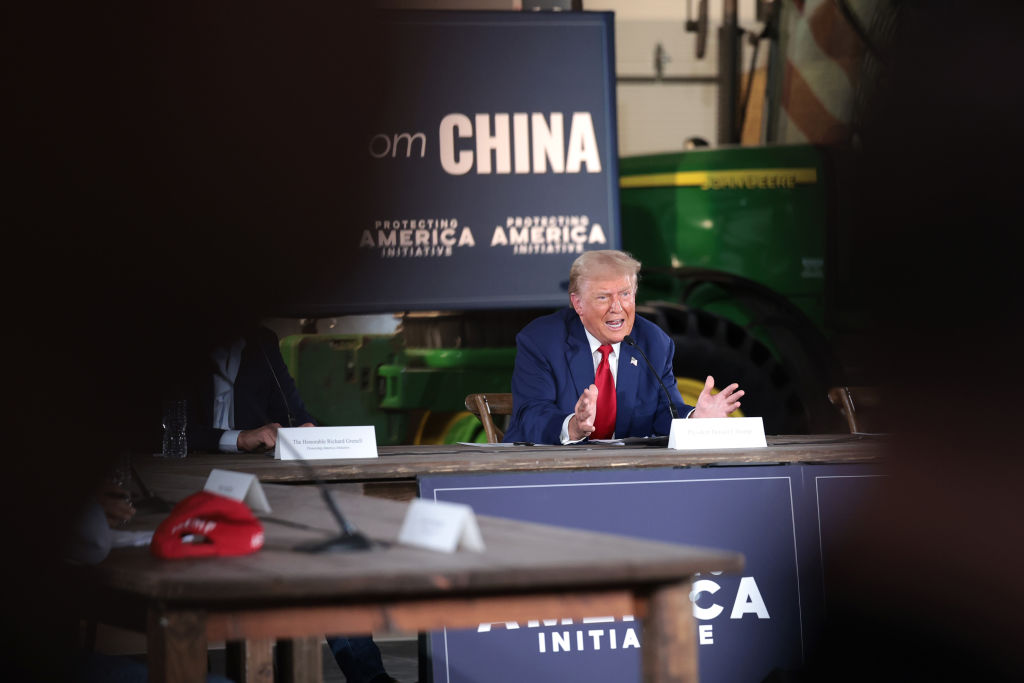Topline
The U.S. and China on Monday announced they would significantly cut back tariffs placed on each other’s goods for at least 90 days as both sides plan to continue negotiations on a trade deal, triggering a major surge in U.S. stock futures and global markets.
Key Facts
As per a joint statement issued by both sides, the U.S. has agreed to lower President Donald Trump’s “reciprocal tariffs” on China from 125% to 10%, while China has agreed to do the same.
A separate 20% tariff on Chinese goods that the president imposed over what he said was China’s alleged role in fanning the fentanyl crisis in the U.S. will remain in place, which means the total levy on Chinese goods will drop from 145% to 30%.
China also agreed to roll back some of the non-tariff measures its implemented in retaliation against U.S. tariffs—details for which are pending but could include a roll back on certain rare earth export restrictions.
While announcing the tariff pause in a press conference in Geneva, where the two sides were holding trade negotiations, Treasury Secretary Scott Bessent said both sides agreed that “we have a shared interest” and “neither side wanted a decoupling” of trade.
Loading...
Bessent said the very high tariffs imposed by both sides was equivalent to a trade embargo and “neither side wants that” and rather the U.S. wants “more balanced trade.”
U.S. Trade Representative Jamieson Greer noted that the rollback does not cover “any sector-specific tariffs imposed globally…So some Chinese goods would still face a higher levy.”
What Have Chinese Officials Said About The Tariff Pause And Talks?
The Chinese commerce ministry issued a statement on the negotiations saying the high U.S. tariffs had “seriously damaged normal bilateral economic and trade exchanges and seriously undermined the international economic and trade order.” The ministry said the talks between the two sides in Geneva were “constructive” and the tariff reduction was “in line with the expectations of producers and consumers in both countries” and also in the best interests of both countries. Beijing said both sides have agreed to “mutually beneficial cooperation, maintain the healthy, stable and sustainable development of China-US economic and trade relations, and jointly inject more certainty and stability into the world economy.”
How Have Markets Reacted To The Tariff Reduction?
Chinese markets and U.S. stock futures cheered the announcement with S&P 500 futures rising 2.54% to 5,822 points and Dow Futures rising 1.97% to 42,136 points. The tech-heavy Nasdaq Futures also surged 3.31% to 20,828 points. The Hong Kong Stock Exchange’s Hang Seng Index ended the day 3.02% up while the Shanghai Composite Index jumped 0.82% as both key indexes erased all their loses since Trump’s “Liberation Day” tariff announcement.
What To Watch For
As per the joint statement, both sides have agreed to “establish a mechanism to continue discussions about economic and trade relations.” Bessent and Greer will represent the U.S. side in these discussions, while Vice Premier He Lifeng will lead the Chinese side. These future talks may be held alternately in China and the U.S. or in a third country that both sides agree upon.
Key Background
Earlier on Sunday, the White House issued a statement titled “U.S. Announces China Trade Deal in Geneva,” that did not offer any additional details. In the statement, Bessent was quoted as saying “we made substantial progress between the United States and China in the very important trade talks.” A comment by Greer was also cited in the statement, which said: “It’s important to understand how quickly we were able to come to agreement, which reflects that perhaps the differences were not so large as maybe thought.” U.S. and Chinese trade officials met in Geneva over the weekend for the first time since Trump announced sweeping “reciprocal tariffs” on several countries including China. The 34% levy on China—on top of the previously implemented 20% fentanyl tariffs—soon escalated into a full blown trade war with both sides hitting each other with rising tit-for-tat tariffs.
Further Reading
White House Says It Reached A Trade Deal With China—Though Details Remain Unknown (Forbes)
Loading...
